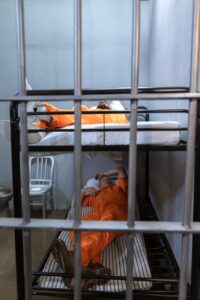Spring report shows enrollment down
A statistical comparison of spring semester enrollments, 2000-04, was released by CEU’s Office of Institutional Research.
Despite hopes for enrollment stabilization, the Utah System of Higher Education (USHE) report of third week enrollment showed a decline in full-time enrollments (FTE) and total headcount for both the Price and San Juan campuses.
Traditionally, FTE numbers have held a significant emphasis in the college’s focus. However, the overall headcount, which includes non-traditional students, reveal the dramatic decrease in enrollments.
This archived article was written by: R. Jensen
A statistical comparison of spring semester enrollments, 2000-04, was released by CEU’s Office of Institutional Research.
Despite hopes for enrollment stabilization, the Utah System of Higher Education (USHE) report of third week enrollment showed a decline in full-time enrollments (FTE) and total headcount for both the Price and San Juan campuses.
Traditionally, FTE numbers have held a significant emphasis in the college’s focus. However, the overall headcount, which includes non-traditional students, reveal the dramatic decrease in enrollments.
Beginning with spring semester 2000, Price campus had 1,433 FTE and 1,829 headcount. San Juan campus had 349 FTE and 521 headcount.
Fast forward to spring semester 2002. Price grew to 1,540 FTE with 2,379 headcount. San Juan decreased to 315 FTE and 440 headcount; both campuses increasing and decreasing respectively during the interim period.
The 2002 spring semester appears to have been the zenith for enrollment at Price and the turning point for San Juan. In spring semester 2003, Price campus dropped to 1436 FTE and 1914 headcount. San Juan increased to 359 FTE and 568 headcount.
Spring semester 2004 failed to bring good news to Price administrators as FTE dropped to 1322 and headcount to 1679. San Juan meanwhile continued to increase with 357 FTE and 606 headcount.
The report, based on USHE budget related and self-reported statistics “shows the total instructional activity for the college that includes state-supported enrollment in addition to enrollment that generates its own income.
” … [budget related and self- support statistics] are important because all enrollments support our community college mission of degrees, transfer and life-long learning,” stated Director of Institutional Research, Lisa Skriner, in an email Monday.
Budget related enrollments “are annualized for funding. USHE uses a formula to determine annualized enrollment based on each term during a fiscal year.
“[CEU does] not receive funding from the state on self-support. They are courses that tuition and fee collections pay instructional cost,” stated Skriner.
According to Skriner, the reported statistics indicate trends in program changes, shifts in instructional delivery and population changes.
Skriner attributed the declining enrollments to the losses of the Moab center and mining program, changes in distance learning origination, moratorium on new programs, lower numbers in graduating classes, and economic reasons.
CEU President Ryan Thomas feels the reported data is a helpful tool.
“The enrollment data helps the college to recognize local trends that may impact future enrollment patterns.
“For example, unlike the rest of the state institutions that generally see increased enrollments with a depressed economy, the local historical trend has been the opposite,” stated Thomas in an email Monday.
Academic Vice President Cliff Coppersmith stated in an email Tuesday, “I agree with my fellow administrators in terms of why this decline has occurred …
“Bottom line is that we have to address improving our program offerings and find ways to keep students coming even when the general economy goes down.
“I believe that in the short-term we will see an improvement for Fall as the general state of the economy improves but we must continue to find ways of bringing more students to CEU and keeping them here throughout their two year program.”
A positive response from the enrollment reports is already underway.
According to Skriner, Institutional Research, Academic Advising, Academic Records, Admissions and Scholarships, and the administration will begin research to determine strategies for maintaining and increasing enrollments.
In his email, Thomas wrote of current strategies already in the works: increasing efforts to provide scholarships for local and out-of-area students and the development of new media to attract prospective students.
Business instructor David Cassidy stated that the reports offer a marketing opportunity for CEU.
Following the principles of Product, Price, Place and Promotion, Cassidy suggested marketing strategies be developed once CEU’s target market is identified.
Cassidy also suggested that academic departments actively engage in high school recruitment.
“The business department is beginning to recruit beyond the schools from which we traditionally attract students. I think other departments should do the same,” stated Cassidy in a telephone interview Monday.
CEU’s Office of Institutional Research released a statistical comparison of spring semester enrollments, 2000-04 last week and showed another decrease in enrollment at the Price school spring semester.
Despite hopes for enrollment stabilization, the Utah System of Higher Education (USHE) report of third week enrollment showed a decline in full-time enrollments (FTE) and total headcount for both the Price and San Juan campuses.
Traditionally, FTE numbers have held a significant emphasis in the college’s focus. However, the overall headcount which includes non-traditional students reveal a decrease in enrollments.
Beginning with spring semester 2000, Price campus had 1,433 FTE and 1,829 headcount. San Juan campus had 349 FTE and 521 headcount.
Fast forward to spring semester 2002. Price campus grew to 1,540 FTE with 2,379 headcount. San Juan decreased to 315 FTE and 440 headcount; both campuses increasing and decreasing respectively during the interim period.
2002 appears to have been the zenith for enrollment at Price and the turning point for San Juan.
In spring semester 2003, Price campus dropped to 1,436 FTE and Cassidy also suggested that academic departments actively engage in high school recruitment.
“The business department is beginning to recruit beyond the schools from which we traditionally attract students. I think other departments should do the same,” stated Cassidy in a telephone interview Monday.




